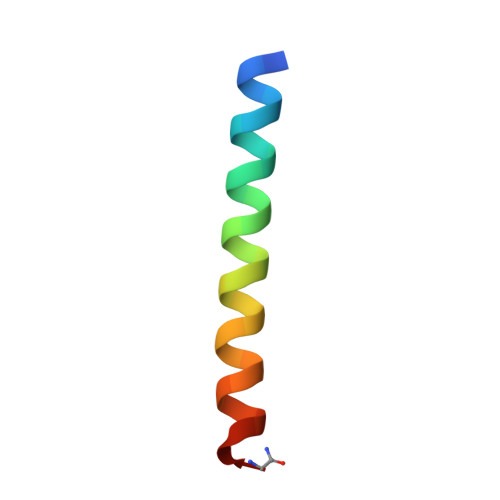A Crystallographic Examination of Predisposition versus Preorganization in de Novo Designed Metalloproteins.
Ruckthong, L., Zastrow, M.L., Stuckey, J.A., Pecoraro, V.L.(2016) J Am Chem Soc 138: 11979-11988
- PubMed: 27532255
- DOI: https://doi.org/10.1021/jacs.6b07165
- Primary Citation of Related Structures:
5K92, 5KB0, 5KB1, 5KB2 - PubMed Abstract:
Preorganization and predisposition are important molecular recognition concepts exploited by nature to obtain site-specific and selective metal binding to proteins. While native structures containing an MS3 core are often unavailable in both apo- and holo-forms, one can use designed three-stranded coiled coils (3SCCs) containing tris-thiolate sites to evaluate these concepts. We show that the preferred metal geometry dictates the degree to which the cysteine rotamers change upon metal complexation. The Cys ligands in the apo-form are preorganized for binding trigonal pyramidal species (Pb(II)S3 and As(III)S3) in an endo conformation oriented toward the 3SCC C-termini, whereas the cysteines are predisposed for trigonal planar Hg(II)S3 and 4-coordinate Zn(II)S3O structures, requiring significant thiol rotation for metal binding. This study allows assessment of the importance of protein fold and side-chain reorientation for achieving metal selectivity in human retrotransposons and metalloregulatory proteins.
Organizational Affiliation:
Department of Chemistry, ‡Biophysics Program, and §Life Sciences Institute, University of Michigan , Ann Arbor, Michigan 48109, United States.


















